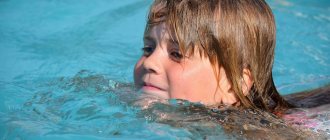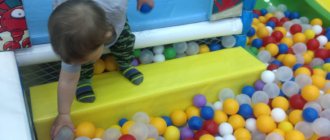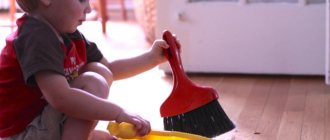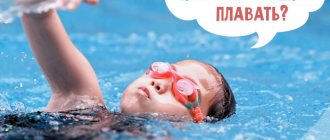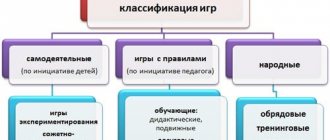Methods of education and training in preschool pedagogy; methodological development on the topic
Department of Education of the Administration of Novocherkassk
Methodical office
School of improvement of pedagogical skills
Topic of the lesson: “Methods of education and training in preschool pedagogy”
The process of training and education is a purposeful and organized process of formation:
- knowledge, skills, abilities
— nurturing attitudes, skills and habits of behavior.
This process is built on the principles of didactics, has a clear program, takes place in specially created conditions, in certain forms of organization, using special methods and techniques.
K.D. Ushinsky psychologically substantiated and developed the didactic principles of teaching children in the classroom, emphasizing that already at preschool age it is necessary to separate serious learning from play “you cannot teach children by playing, learning is work.” Therefore, the tasks of preschool education, according to K.D. Ushinsky, is the development of mental strength (development of active attention and conscious memory) and the gift of speech of children, preparation for school. However, at the same time, the scientist put forward the thesis of the duality of teaching and raising preschool children.
There are numerous attempts to develop a system of didactic principles in the works of modern researchers. Their analysis allows us to identify the following principles as fundamental, generally accepted:
— visibility;
- activity and independence;
- systematicity and consistency;
— taking into account the age and individual characteristics of children;
- strength.
During preschool childhood, a child must acquire a certain amount of knowledge, skills and abilities. Knowledge is the result of cognitive activity, and therefore its nature is determined by the nature of cognition of preschool children. The development of preschool children involves their constant interaction with the outside world. This interaction should be as diverse as possible so that the preschooler can realize his abilities and creativity as successfully as possible.
It is important for educators and teachers working with preschool children to know that their main task is not to “adjust” children to master learning skills, but to create favorable conditions for the development of their abilities and even talents.
An essential feature of the cognitive activity of preschool children is its visually effective and visually imaginative nature. Therefore, the knowledge of preschoolers exists in the form of ideas, images, reflecting known objects, phenomena, some of their features, and the child’s actions with them. In this regard, the child’s knowledge is characterized as fragmentary, incomplete, fragmentary, weakly generalized, and unrelated.
Knowledge, abilities, skills and habits are quite closely intertwined; Sometimes it is not always possible to unambiguously attribute one or another quality of a person to one of these four categories.
How do these four concepts relate to each other: knowledge, abilities, skills and habits? The best place to start is by looking at an example. Suppose one citizen decided to become a car enthusiast. To do this, he first decided to get his license. First of all, he gained knowledge: he studied driving theory, traffic rules, and read various useful and not so useful articles on the Internet. Then, gradually, his skills began to develop; a citizen, for example, learned to start a car and move away, perform some maneuvers, etc. Gradually, as experience increased, skills began to be transformed into skills: the citizen began to start the car and perform maneuvers in such a way that he consciously controlled these processes to a much lesser extent; he began to do many things fully “automatically.” Thus, skills honed in practice began to turn (compile) into skills. When a car enthusiast just started driving a car, book knowledge gradually moved from the category of theory to the category of practice. Over time, all book knowledge was tested in reality, the most optimal (or close to it) ways of performing certain operations were found.
The main difference between skills and abilities is that mastery of a skill implies perfect or simply well-honed performance of certain actions. You can have the skill of shooting a rifle or the skill of driving on ice, but you cannot have the skill of government or the skill of writing monographs.
In a sense, knowledge is also skills, also skills. Only these skills relate to verbal and general mental activity of a person. The main difference between knowledge and skills is that a person’s specific knowledge about a particular object or phenomenon is the place of this object or phenomenon in a person’s picture of the world. Any new knowledge of a person cannot be likened to a new file on a computer’s hard drive. Any new knowledge is a changed picture of the human world. If the picture of the world does not change, then this is a skill or skill.
Knowledge, abilities and skills are all manifestations of purposeful activity, purposeful actions, constructive understanding of reality. But in humans, like many animals, however, not every action can be meaningful, purposeful and constructive. The fact is that there is such a thing as a habit. It is important to understand that a habit is not only and not so much a need to do something, but an automatism of behavior, sometimes simple, sometimes complex.
Knowledge is a system of concepts about objects and phenomena acquired as a result of perceptions, analytical-synthetic thinking, memorization and practical activity.
Skill is a person’s ability to perform work productively, with the proper quality and at the appropriate time under new conditions.
A skill as a property of a person is his ability, in the process of purposeful activity, to perform its constituent private actions automatically, without special attention directed to them, but under the control of consciousness. Skills can be mental (thinking and memory), sensory (perception skills), motor (psychomotor) and volitional. Each skill goes through a number of stages in the process of its formation. This process is called skill automation.
Skills and abilities are formed only in practical activities carried out by methods of exercises and training. Without purposeful activity, neither skills, nor even the skills that comprise them, can be formed.
A habit is an action that has become a necessity, causing unpleasant feelings of dissatisfaction and anxiety when it is not performed. Individual words and movements, phrases and actions, acts and behaviors, and even complex and lengthy activities can be habitual. Habits can be useful, facilitating the accurate and timely completion of work, making even hard work enjoyable; may be inappropriate, causing useless and unnecessary actions under the given conditions; There are also harmful ones for life and work, threatening troubles and even great dangers. Appearing in the wrong place and at the wrong time, inappropriate and bad habits can be useful in other conditions.
Many household and work habits are formed in childhood, in the process of upbringing and accumulation of life experience - for example, the habit of behaving properly during meals, the habit of cleanliness and neatness in clothing and premises, the habit of productive work or artistic or technical creativity and invention.
In most cases, habits are formed spontaneously, not intentionally on the part of educators and especially students. And yet, experienced educators form useful habits in their students and eradicate harmful ones through their influence on the consciousness and feelings of the students.
Educational methods - scientifically based methods of pedagogical
expedient interaction between the teacher and students,
contributing to the organization of the life of pupils, their activities,
relationships that stimulate their activity and regulate behavior.
Teaching methods are ways of interconnected activities of the teacher and students, in which children acquire skills, knowledge and abilities,
their worldview is formed, their inherent abilities are developed.
Each method distinguishes between internal and external sides: on the one hand, the mental cognitive processes underlying the methods of action, on the other, the system of methods of action and the child.
Each method is a set of techniques used to solve didactic problems (introduce new things, consolidate a skill or skill, creatively rework what has been learned). A technique is an element of a method.
The following educational methods and techniques exist:
| Methods | Techniques |
| Methods for forming personality consciousness | Story, clarification, explanation, conversation, ethical conversation, situation analysis, exhortation, etc. |
| Methods of organizing the life activity and behavior of pupils | Assignment, exercise, creation of educational situations, pedagogical requirements, etc. |
| Methods of stimulating activity and behavior | Demand, competition, encouragement, punishment, method of natural consequences, etc. |
| Control methods | Pedagogical observation, conversation, pedagogical consultation, survey, analysis of the results of students’ activities, etc. |
The choice of teaching method will depend on the purpose and content of the upcoming lesson.
1. Visual methods :
a) observation - the ability to peer into the phenomena of the surrounding world, highlighting the main ones in them, notice changes, establish the cause, draw conclusions;
b) demonstration – gives the child a visual image of familiar and unfamiliar objects;
2. Practical methods:
a) exercise – repeated repetition of mental and practical actions of a given content;
b) experiments and experimentation - aimed at helping in acquiring knowledge about a particular subject;
c) modeling - a visual and practical method (globe, map, site plan, etc.);
3. Gaming methods and techniques:
a) didactic game - improving and consolidating knowledge, mastering new knowledge and skills of different content;
b) an imaginary situation in an expanded form - for the assimilation of certain knowledge (“Flower shop” - knowledge about plants, speech development, etc.);
4. Verbal methods:
a) teacher’s story - study of educational material;
b) conversation - when children have knowledge about the subject;
c) reading fiction is a source of knowledge about the world around us, educates feelings, develops thinking, imagination, and memory.
A set of techniques is usually used in one lesson. For example, a comparison of objects or illustrations is accompanied by naming, (a sample word), an explanation, a literary word, and appeals to children. The teacher must first not only think through the general course of the lesson, but also carefully outline teaching techniques (precision and brevity of formulations, compatibility of individual techniques).
In preschool educational institutions, visual and game methods in combination with verbal ones predominate. For example, E.I. Tikheyeva believed that the learning process for children in kindergarten should be based on visualization in teaching. She argued that the special organization of the environment contributes to the expansion and deepening of children’s ideas.
Literature.
Preschool pedagogy (edited by V.I. Loginova and P.G. Samorukova). —
M.: Education, 1988
Platonov K.K., Golubev G.G. Psychology. – M., 1977
Ponomarev Ya. A. Knowledge, thinking and mental development. – M., 1967
Shaporinsky S. A. Education and scientific knowledge. – M., 1981
The concept of teaching methods and techniques
Definition 2
Teaching method is a way of organized and orderly activities of the teacher and children, aimed at achieving the goals and objectives of education in the learning process.
Quite often the concept of method is identified with the concept of technique. However, these are different concepts in content and definition.
Definition 3
A technique is a part of a method, which is its specific element.
Are you an expert in this subject area? We invite you to become the author of the Directory Working Conditions
Teaching methods involve interrelated activities of the teacher and students, the direction of which depends on the educational goal. In this connection, each teaching method organically includes the educational activities of the teacher and the active educational and cognitive activity of children.
The activity of children, within the framework of the teaching method, is active and purposeful work on the perception and assimilation of educational material provided by the teacher.
The activities of the teacher, within the framework of the teaching method - presentation of educational material, explanation, organization of training sessions, etc.
Quite often, the role of the teacher in the educational process comes down to the fact that he defines the topic, conducts an introductory conversation, gives instructions for carrying out independent educational work, and only after that invites the children to comprehend and assimilate the educational material.
Thus, the nature of the teacher’s activity depends on which teaching method he chose to master a specific educational topic. However, despite the type of method, a prerequisite is the orderly and organized activity of the teacher and children.
Finished works on a similar topic
Course work Practical methods of teaching preschoolers 440 ₽ Abstract Practical methods of teaching preschoolers 240 ₽ Test paper Practical methods of teaching preschoolers 230 ₽
Receive completed work or specialist advice on your educational project Find out the cost
Note 1
So, teaching methods mean all the methods of a teacher’s teaching work and the organization of educational and cognitive activities of children, aimed at solving didactic problems and mastering new educational material.
Types of practical methods of teaching preschoolers
The following types of teaching methods for preschoolers are distinguished:
- Visual methods: observation, demonstration of visual aids.
- Verbal methods: story (teacher or children), conversation, reading fiction.
- Game methods: didactic game, imaginary situations with roles.
- Practical methods: exercises, elementary experiments, experimentation, modeling.
Practical methods of teaching preschoolers are methods aimed at organizing the cognitive activity of preschool children, with the aim of assimilating new knowledge and skills of a practical nature.
The leading practical methods of teaching preschoolers are:
- Exercise
- Elementary experiments and experiments
- Modeling
Exercise is the repeated repetition by a child of mental or practical actions in order to consolidate them and bring them to a state of skill. In the process of performing exercises, children are given the opportunity to master various methods of mental activity and develop educational and practical skills. With the help of exercises, a child can master most of the content of preschool learning.
Elementary experiments and experiences are aimed at a preschool child acquiring new knowledge about a certain object, phenomenon or action. During the experiment, the child influences the object of cognition in order to establish its properties, connections, etc. If an object has any hidden properties, then their identification is carried out through the organization of elementary experiments.
Experimentation, as an activity of a preschool child, is formed and developed in line with his own activity throughout preschool childhood.
Experiments and experimentation are aimed at developing such qualities and skills as observation, the ability to compare, contrast, express one’s opinion in a reasoned manner, and formulate conclusions.
Modeling is a visual and practical teaching method that involves creating a model that includes generalized images of the main properties of the modeled object.
The basis of the modeling method is the replacement of a real object with its model (image, layout, symbol, etc.).
Initially, the ability to model (substitute) is formed in children during play, when they replace real objects with toys or even make a conventional designation (for example, a stick is a spoon, a leaf of a tree is money, pebbles are candies for a doll, etc. ).
In addition, the experience of modeling (substitution) accumulates in the process of the child mastering speech and visual activity. For example, when mastering speech, the teacher uses colors for sound analysis: vowels - red, consonants - blue, which contributes not only to the acquisition of the sound basis of the word, but also to the accumulation of modeling experience.
Selection of teaching methods
The choice of teaching method for preschool children is most often made by the teacher in any form. When choosing a method, the teacher takes into account a number of factors, such as:
- Educational goals facing a preschool institution, based on the state standard and the guidelines of modern didactics.
- Taking into account the peculiarities of the content of the science or subject being studied.
- Features of the teaching methodology of a specific academic discipline, due to its specifics.
- Purpose, objectives and content of educational material for a specific age level.
- Taking into account the characteristics and individualities of children, their age-related capabilities and needs.
- Level of readiness of children. They take into account the level of education, development and knowledge.
- Material and technical capabilities of the children's educational institution, the availability of the necessary visuals, methodological and teaching aids, and technical means.
- The capabilities and characteristics of the teacher, the level of theoretical and practical preparedness, methodological skills, and his personal qualities.
Get paid for your student work
Coursework, abstracts or other works

